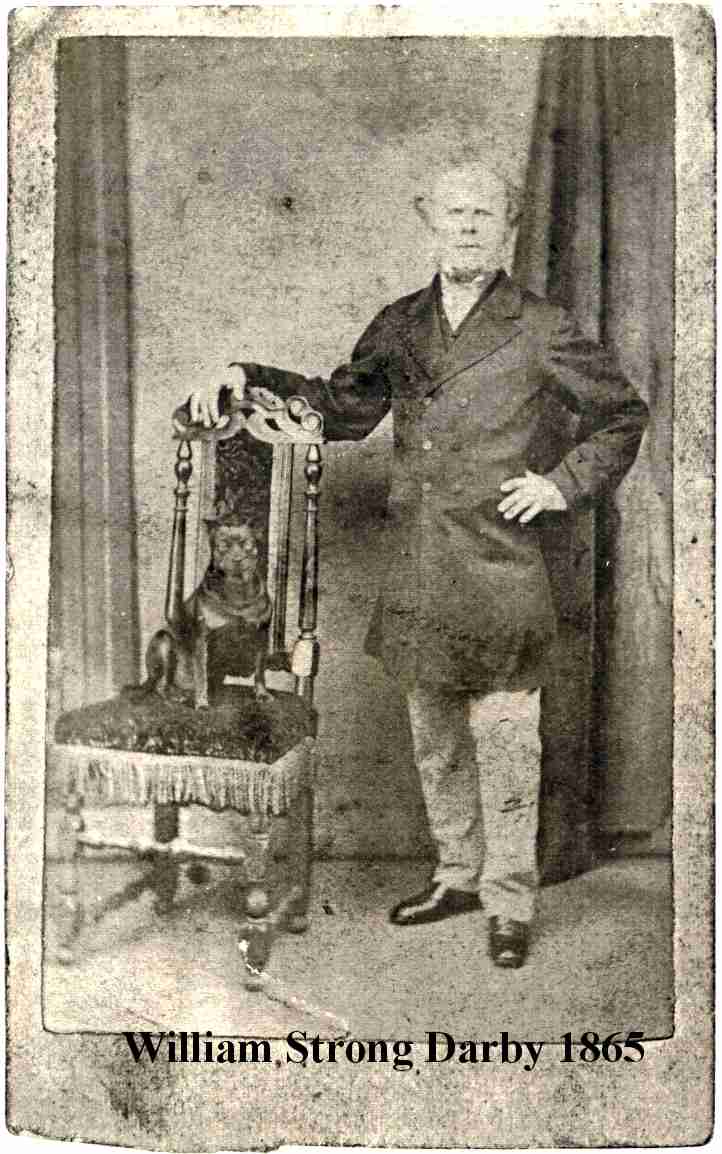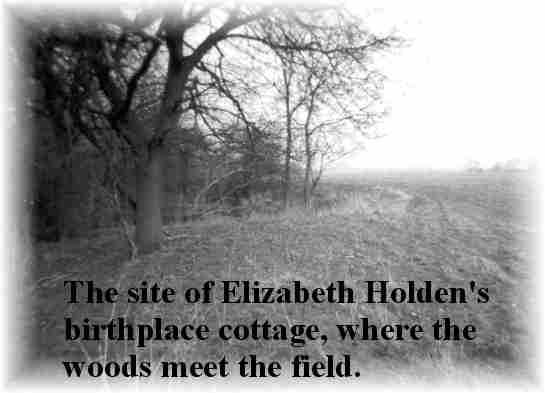 As a
young man 'about town', William would have witnessed the birth pangs of Victorian London :
the popular rejoicing at the burning down of Parliament; the interminable building of
Trafalgar Square on the site of the old royal stables; the 'girl-Queen' Victoria's
coronation; the endlessly delayed and botched erection of Nelson's Column with all its
financial scandals; the rather more momentous arrival of the first railway in London; the
steady spread of gas lighting in the streets; and the terrifying cholera epidemics and
great chartist gatherings bringing a 'revolutionary' panic in 1848 and 1849. A regular
sight when parliament was in session, was the straight backed, hook nosed, figure, of that
severe old Irishman, the Duke of Wellington, respected for his victories, hated for his
politics, riding on his immaculate horse from Apsley House to the Lords. As a 'lively'
fellow, William would surely take an interest in the passing parade of 'events', and as
the London tailors were a notoriously radical and argumentative crew, he probably had an
opinion on most of these things and people, too.
As a
young man 'about town', William would have witnessed the birth pangs of Victorian London :
the popular rejoicing at the burning down of Parliament; the interminable building of
Trafalgar Square on the site of the old royal stables; the 'girl-Queen' Victoria's
coronation; the endlessly delayed and botched erection of Nelson's Column with all its
financial scandals; the rather more momentous arrival of the first railway in London; the
steady spread of gas lighting in the streets; and the terrifying cholera epidemics and
great chartist gatherings bringing a 'revolutionary' panic in 1848 and 1849. A regular
sight when parliament was in session, was the straight backed, hook nosed, figure, of that
severe old Irishman, the Duke of Wellington, respected for his victories, hated for his
politics, riding on his immaculate horse from Apsley House to the Lords. As a 'lively'
fellow, William would surely take an interest in the passing parade of 'events', and as
the London tailors were a notoriously radical and argumentative crew, he probably had an
opinion on most of these things and people, too.When we next meet William in the records, it is at his marriage in Marylebone Church, opposite Regent's Park, in 1849. His bride was Elizabeth Holden from Waltham Abbey, where she had grown up in her farm labourer father's
 secluded cottage along a 'green lane' on the very edge of Galleyhill Wood, an
outlying fragment of Epping Forest near Nazeing Green. (The cottage has
secluded cottage along a 'green lane' on the very edge of Galleyhill Wood, an
outlying fragment of Epping Forest near Nazeing Green. (The cottage has How William and Elizabeth met we do not know. The Hunsdon Darbys farmed land close by. Perhaps on a trip back to or from Stortford William stopped at the 'Coach and Horses' Inn, just through the wood and across the field from the cottage. It was the last horse change stage before London on this route. Elizabeth may have worked in the 'Coach and Horses'. She may possibly have left this rural world to work in London, of course, but this is less likely; most of her family seemed to find employment in or around Waltham Abbey, in the farms, the Gunpowder Works, or at the silk mill. In its own way, it was quite an insular community for one so close to the city : (On very still mornings, or when the wind blew from where a permanent pall of smoke hung in the sky in the west, there was sometimes a low murmuring rumble : it was the traffic in the London streets). But here it was perfectly possible to live a life without much thought for what lay beyond the parish bounds : a later visitor, asking some children whether a particular old bridge by the Abbey was that reputed to have been built by the saxon King Harold, was told, "Oh, yes, sir, I thinks so. Least ways, thet were 'im or Mr Chapman."- (The Chapmans were, and are, local farmers).
But it is not impossible that some of the seven or eight years between finishing his apprenticeship and getting married, William spent back in Essex or just over the Lee in Hertfordshire. These were the dreadful 'hungry 'forties', and people had to 'shift for themselves' as best they could. Certainly a Henry Salmon, a master tailor in Cheshunt and Waltham Abbey, and later in London, seems to turn up at several points in the story. It may be that William met Elizabeth while working for him. We do not know. But by 1849, William was living and working in Marylebone.
Next door to the Marylebone Church on their wedding day, was the unusual house with bright green and blue railings in which Mr Dickens was then working on 'David Copperfield' : had he looked out of the window at that moment, waiting for the right word to come, perhaps, he might have seen them go past. The table on which, and the heavy register into which, they entered their names -- and the name of an imaginary father --were the same that very shortly before had witnessed the signatures of Robert Browning and Elizabeth Barrett to their then clandestine, and soon to be scandalous, marriage. For them, the vicar himself had made an appearance. William and Elizabeth got the curate, Mr Charlton, an elderly man who had come late to the ministry, and who had a strong north country accent.
One of the witnesses to William's marriage, it is pleasing to note, was 'cousin' Caroline Carpenter, daughter of James and Sarah. That couple were still living in Stortford. Not so Henry Gilbey, who had lost his fight against the coming of the railway, seen his coach business wither, and had himself died soon after. Caroline, if not living in London, could have come down by train from Stortford to Shoreditch, at that time the terminus.